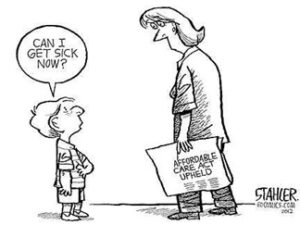
With Summer approaching, many Small Businesses are on the hunt for seasonal employees. Despite the numerous benefits seasonal employees provide employers, it’s important for Small Businesses to be aware of the potential risks associated with seasonal employment and healthcare coverage compliance. Understanding the requirements and demonstrating compliance is paramount for Small Businesses as they transition into Summer and the rest of the calendar year.
Per the Patient Protection and Affordable Care Act (the “ACA”), “applicable large employers” (“ALE”) must provide group health plan coverage to their employees. ALE have at least fifty (50) full-time or full-time equivalent employees in the preceding year.
To comply with the ACA, ALE’s must report their coverage offers to the IRS. ALE’s expose themselves to significant penalties if (i) they fail to offer the minimum essential coverage to at least 95% of employees and their dependents; or (ii) they offer coverage that is neither “affordable” nor provides a “minimum value.”
How does this apply to Small Businesses? While many Small Businesses don’t employ at least 50 full-time employees, seasonal employees are crucial to the growth and sustainability of these organizations, particularly during the Summer. As these seasonal employees matriculate into the summer workforce, it’s important for Small Businesses to take note of their employment hours in consideration of compliance with ACA requirements. If employees work either thirty (30) hours in a week, or one-hundred and twenty (120) hours for the month, they are considered full-time employees under the ACA.
What will it cost me if I choose to bite the bullet? Before electing for noncompliance, take note of the IRS’ increased penalties. Failure to file or furnish accurate statements is $310 per return. Intentional disregard when furnishing accurate statements or neglecting to file will be assessed a $630 fee per return.
Larger penalties include a 4980H(a) or 4980H(b), and if both are applied in the same tax year, then the larger of the two will be accessed. The penalties have increased for both in the 2024 tax year.
Employers who become entangled with a 4980H(a) penalty will be assessed, amounting to $2,970 per year for every full-time employee, whereas a 4980H(b) penalty will only put employers in the hole $4,460 per employee violation per year. Remember, the IRS cannot assess ACA penalties unless an organization has at least one employee who obtained a Premium Tax Credit from a state or federal health exchange.
How to prevent this? The Seasonal Worker Exclusion. Have no fear, if your Small Businesses is considered an ALE, due to increased seasonal employment, the Seasonal Worker Exclusion provides a legal work-around while ensuring ACA compliance. If the total number of full-time employees is (i) greater than or equal to fifty (50) for 120 days or less, or 4 months or less, and (ii) ALL employees in excess of 50 were seasonal workers, then the Employer is not an ALE. Under the ACA, “seasonal worker” is defined by a reasonable, good-faith interpretation by the employer.
Summer employment of seasonal workers for Small Businesses is the lifeline for sustained growth throughout a busier time of the year. On the other hand, Summer employment has the potential to pose a financial risk to Small Business owners. Therefore, Small Business compliance with the ACA is crucial to ensure cool and comfortable Summers for employers.
For more information: https://www.americanbar.org/groups/business_law/resources/business-law-today/2024-april/primer-affordable-care-act-compliance-growing-businesses/
And for more regarding penalties, see https://acatimes.com/affordable-care-act-penalties-increase-in-again-in-2024/.
For assistance with your small business’s legal needs, please contact the clinic at businessclinic@elon.edu.

